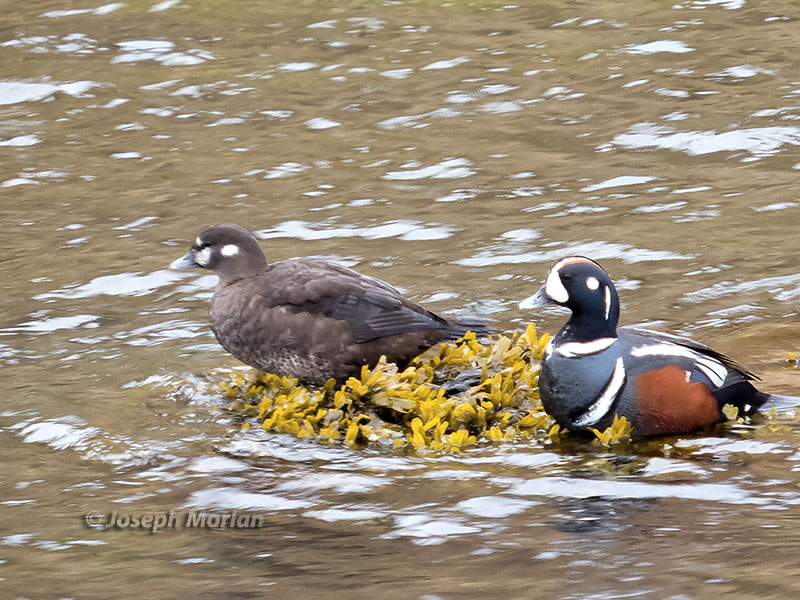
This attractive species has contracted its breeding range in much of Western North America in the last half century. Although common in Alaska it is listed as "vulnerable" by the state with threats including contamination by heavy metals. However the IUCN says the population is now increasing and considers the species to be of "least concern." Clements/eBird still recognize the Pacific population as a separate race characterized by larger size and larger amber head-band. However differences are slight and most authorities consider the species to be monotypic. Canon PowerShot SX50 HS.
References:
BirdLife International. 2015. Histrionicus histrionicus. The IUCN Red List of Threatened Species 2015: e.T22680423A85031851. Downloaded on 13 October 2016.
Carboneras, C. & Kirwan, G.M. (2017). Harlequin Duck (Histrionicus histrionicus). In: del Hoyo, J., Elliott, A., Sargatal, J., Christie, D.A. & de Juana, E. (eds.). Handbook of the Birds of the World Alive. Lynx Edicions, Barcelona. (retrieved from http://www.hbw.com/node/52918 on 7 July 2017).
Robertson, Gregory J. and R. Ian Goudie.(1999).Harlequin Duck (Histrionicus histrionicus), The Birds of North America (P. G. Rodewald, Ed.). Ithaca: Cornell Lab of Ornithology; Retrieved from the Birds of North America:https://birdsna.org/Species-Account/bna/species/harduc